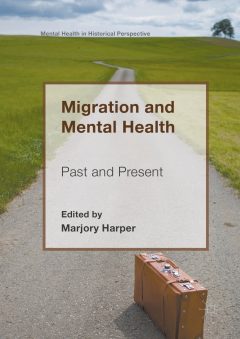 Marilyn Barber, Adjunct Research Professor in the History Department, has contributed a chapter entitled “Stories of Immigrant Isolation and Despair: Canadian Novels and Memoirs Since the 1850s” to a new book entitled Migration and Mental Health: Past and Present (Palgrave MacMillan, 2016).
Marilyn Barber, Adjunct Research Professor in the History Department, has contributed a chapter entitled “Stories of Immigrant Isolation and Despair: Canadian Novels and Memoirs Since the 1850s” to a new book entitled Migration and Mental Health: Past and Present (Palgrave MacMillan, 2016).
About the Book
The relationship between migration and mental health is controversial, contested, and pertinent. In a highly mobile world, where voluntary and enforced movements of population are increasing and likely to continue to grow, that relationship needs to be better understood, yet the terminology is often vague and the issues are wide-ranging. Getting to grips with them requires tools drawn from different disciplines and professions.
Such a multidisciplinary approach is central to this book. Six historical studies are integrated with chapters by a theologian, geographer, anthropologist, social worker and psychiatrist to produce an evaluation that addresses key concepts and methodologies, and reflects practical involvement as well as academic scholarship. Ranging from the mid-nineteenth century to the present, the book explores the causes of mental breakdown among migrants; the psychological changes stemming from their struggles with challenging life circumstances; and changes in medical, political and public attitudes and responses in different eras and locations.
Marilyn Barber’s chapter uses Canadian literary texts as a medium for analyzing migrant stories, focusing explicitly on the interaction of ethnicity and gender in contemporary perceptions of mental breakdown. The main subjects are Irish and English migrants whose status within the dominant Anglo-Celtic culture in Canada did not shield them from encountering dislocation and alienation. Drawing upon selected memoirs and novels from the 1850s to the latter twentieth century, the article explores the continuing vulnerability of the migrant experience and the contribution of literary texts to an understanding of individual trauma and social response.